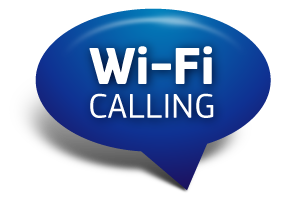By Anca Gagiuc on September 25, 2014 in Technology
Wi-Fi Calling has never been a priority for carriers with good cellular service. How ever, following the recent announcement that iPhones will support Wi-Fi Calling through iOS8, and that T-Mobile is already on board, the rest of the carriers have somewhat been forced to rethink their plans for this service.
ever, following the recent announcement that iPhones will support Wi-Fi Calling through iOS8, and that T-Mobile is already on board, the rest of the carriers have somewhat been forced to rethink their plans for this service.
The terminology might be confusing, what does Wi-Fi Calling mean exactly?
This nifty sounding technology uses your home Wi-Fi to make calls and send texts over the internet. It allows cellular packets from your phone to be transferred to your carrier over the internet, and reintroduces them into the cellular network, much like beaming over the air.
It differs from Google Hangouts and Skype – these let you talk to other people by using call forwarding or some internet-based interface – Wi-Fi Calling allows you to use your actual carrier phone number over the internet. It differs from VoIP technology which lets you use an internet-connected phone just as you’d use a landline, transferring your voice over the internet to the switched telephone network – the Wi-Fi Calling technology drops the cell towers path, connecting your voice to your mobile carrier’s network using the internet.
One of the advantages of this system is that it can help you conserve plan minutes and texts, as the calls that are made over Wi-Fi don’t count against your plan. Moreover, it enables you to make calls using your phone number even when your network cuts out or when you’re outside your coverage area.
Wi-Fi Calling is not a new idea – smaller providers like Republic Wireless have been offering the service for quite some time – but Apple’s announcement may be forcing everyone by emphasizing the technology and launching it before the rest are ready to go.
At first, only iPhones on T-Mobile will offer this service and all new T-Mobile phones. It is already in many Android and Windows Phone devices: everything from the latest stars, like the Samsung Galaxy S5 to outmoded models like the Samsung Galaxy Avant. Sprint supports Wi-Fi Calling for compatible Android phones without any news on a possible support for iPhones.
As every technology in its early stages, and despite the statement of Apple’s SVP Phil Schiller, Wi-Fi Calling will probably face its difficulties, and seamless will not be the word to describe it. Apple made us understand that the customer will be able to jump from the carrier’s spectrum to Wi-Fi and back, while the fine print on T-Mobile’s site takes confusion to a new level: “Most devices will not transition between Wi-Fi and the wireless network.” & “Device will not transition between Wi-Fi and the cellular network.” We shall find out soon.
A seamless means for the voice call hand-off could be the VoLTE (Voice over LTE) where the calls start as data packets (Skype-like), instead of the cellular technology; this way, they could theoretically take the fastest route to their destination.
“This is like adding millions of towers to our network in a single day,” said John Legere, president and CEO of T-Mobile, in a statement. Though all the wrinkles need to get plenty of ironing, Wi-Fi Calling has plenty of potential.


